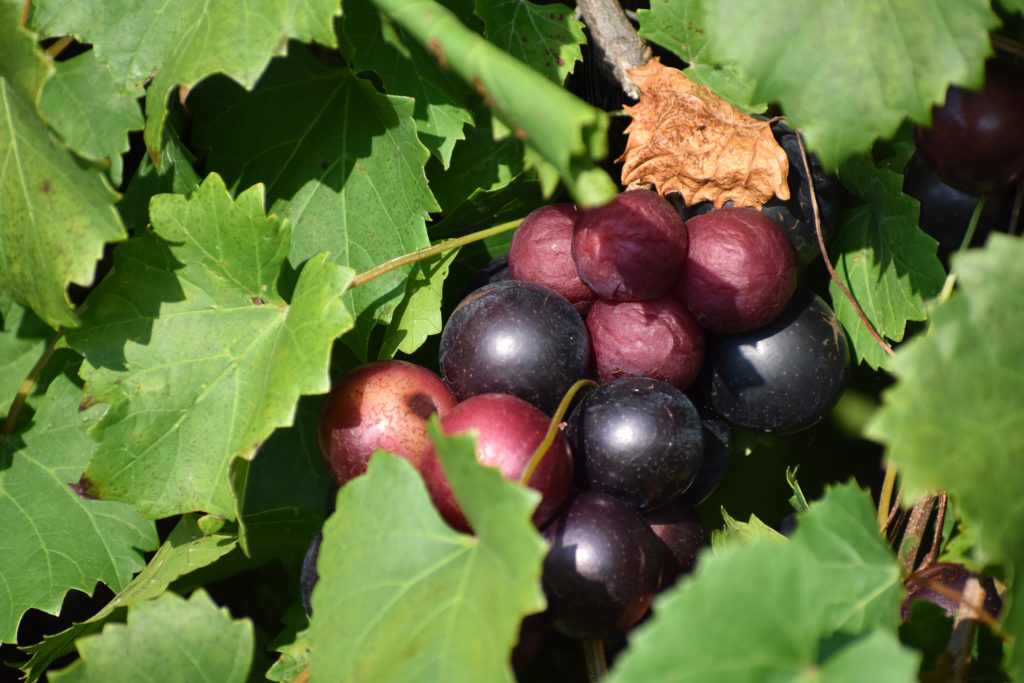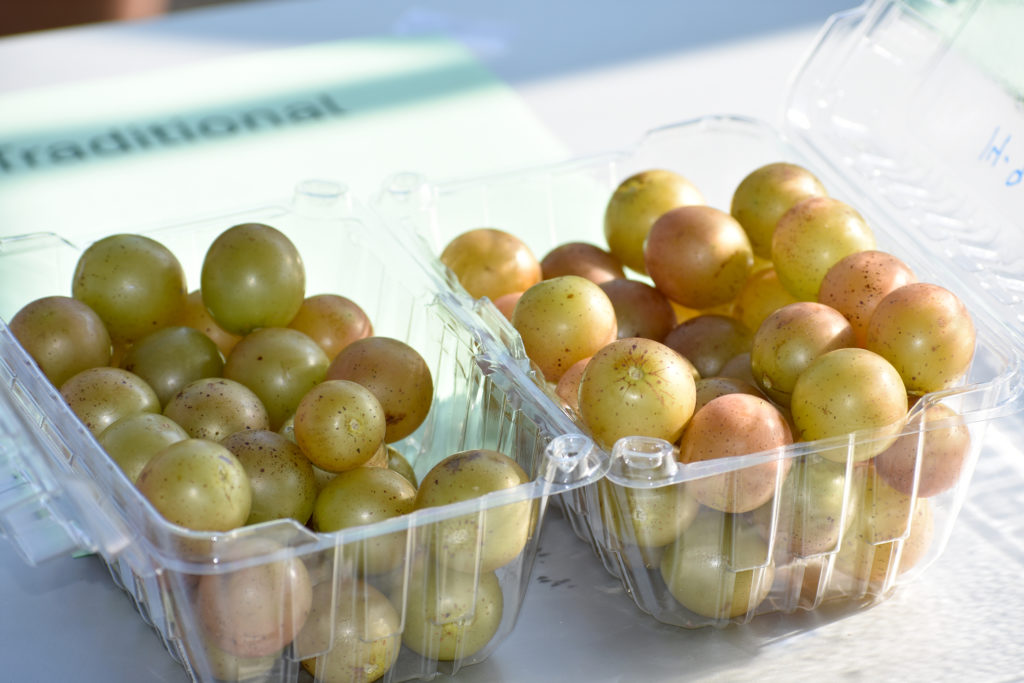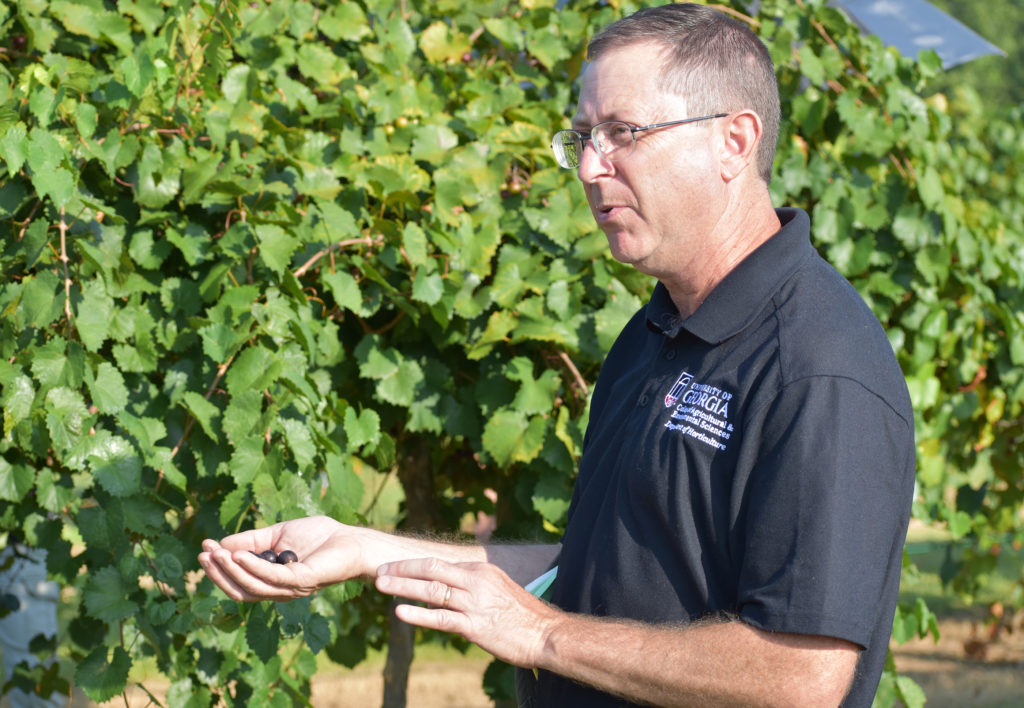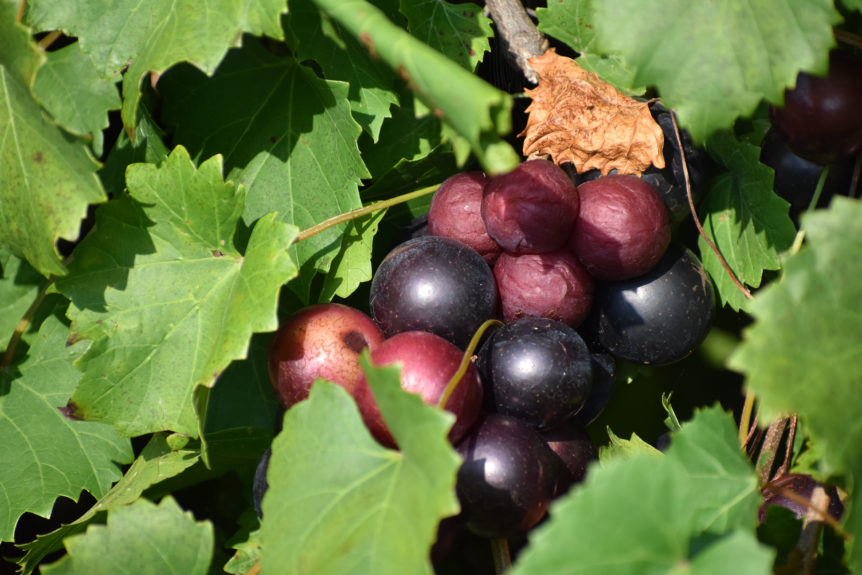
By Clint Thompson
All it should take for consumers to enjoy a muscadine grape is to just give it a try. Getting to that point, however, remains a challenge for Georgia producers.
University of Georgia (UGA) pecan breeder Patrick Conner discussed the future of muscadines during a field day on Aug. 17 at the UGA Tifton Campus.

“We’ve got to teach people what a muscadine should be. When they try them, they almost invariably like them. They have a lot of sweetness and a lot of flavor; a lot more distinctive and good flavor than a lot of store-bought seedless grapes,” Conner said. “They just tend to be neutrally sweet, whereas a muscadine has a lot of aroma, a lot of flavor to it. It’s just getting over the hurdle of them trying it, especially when you have a lot of people moving to the South. We have a lot of northerners now in the (South), and we’ve just got to get them more exposed to the grapes.
“I grew up in Indiana and had never seen them in the grocery stores. I did not experience them until I came to Georgia. We really need to get more exposure and get them into more cities in the north.”

Consumers should know that a muscadine is at its sweetest if it is soft and darker colored; in contrast to regular grapes that are overripe if they present with those two traits.
Upon Further Review
Conner is currently studying muscadine cultivars and researching characteristics like texture, weight, sweetness and color. All can influence a consumer’s decision in whether to purchase the fruit. Flavor is a trait that distinguishes muscadines from the average grape.
“They’re not often sold as a cultivar, so that can be a little bit of a hurdle to overcome in terms of knowing what you’re getting when you buy it. With that being said, most muscadines that are out there have a good flavor, so they’re different from each other,” Conner said. “If they’re getting a ripe muscadine, they’re going to like the product.”










